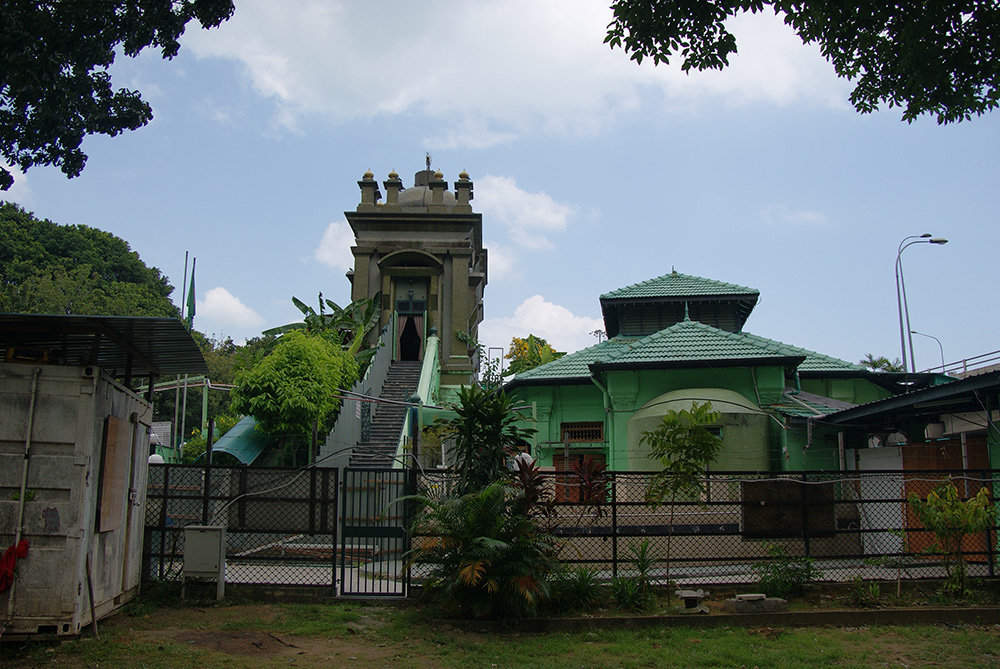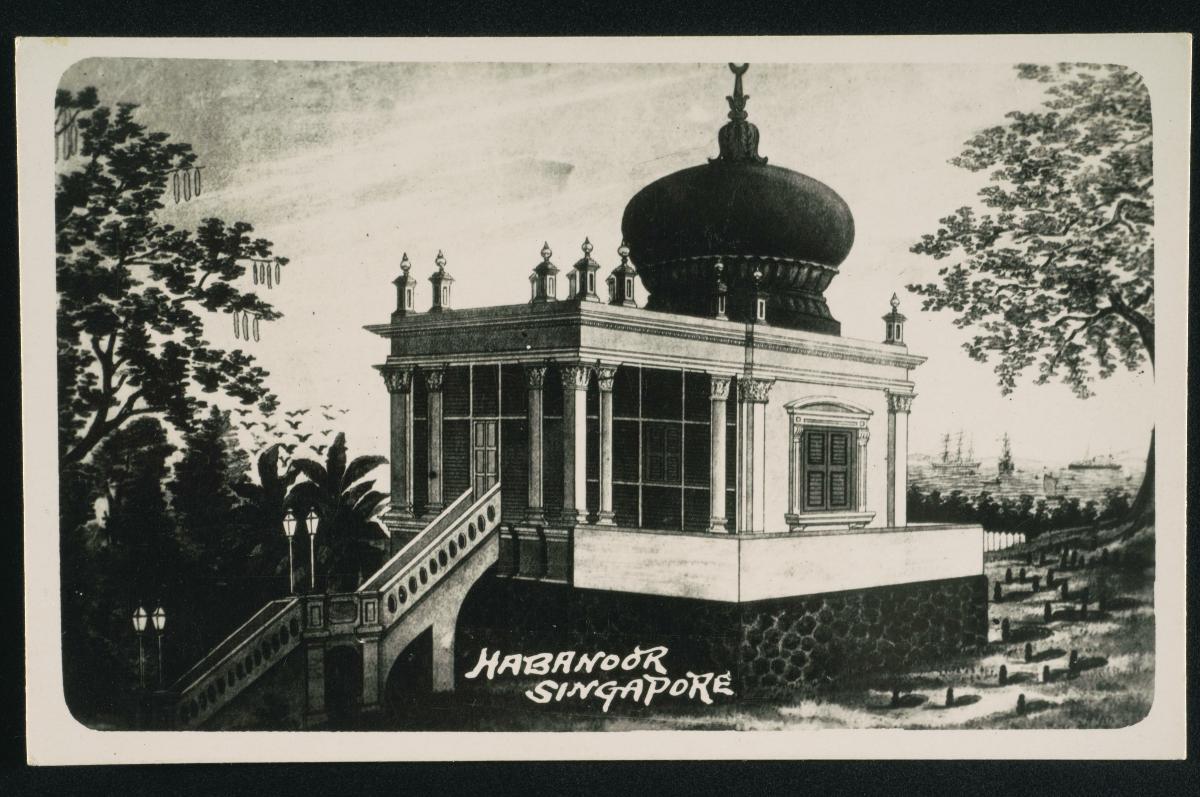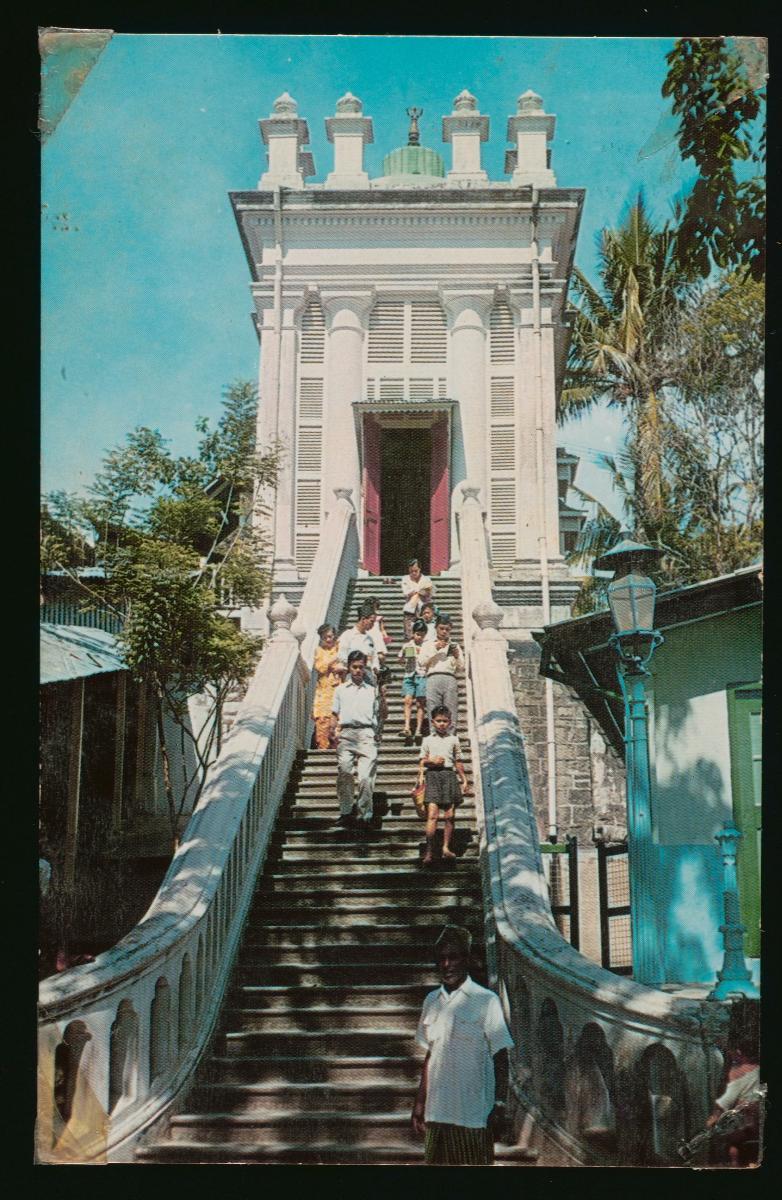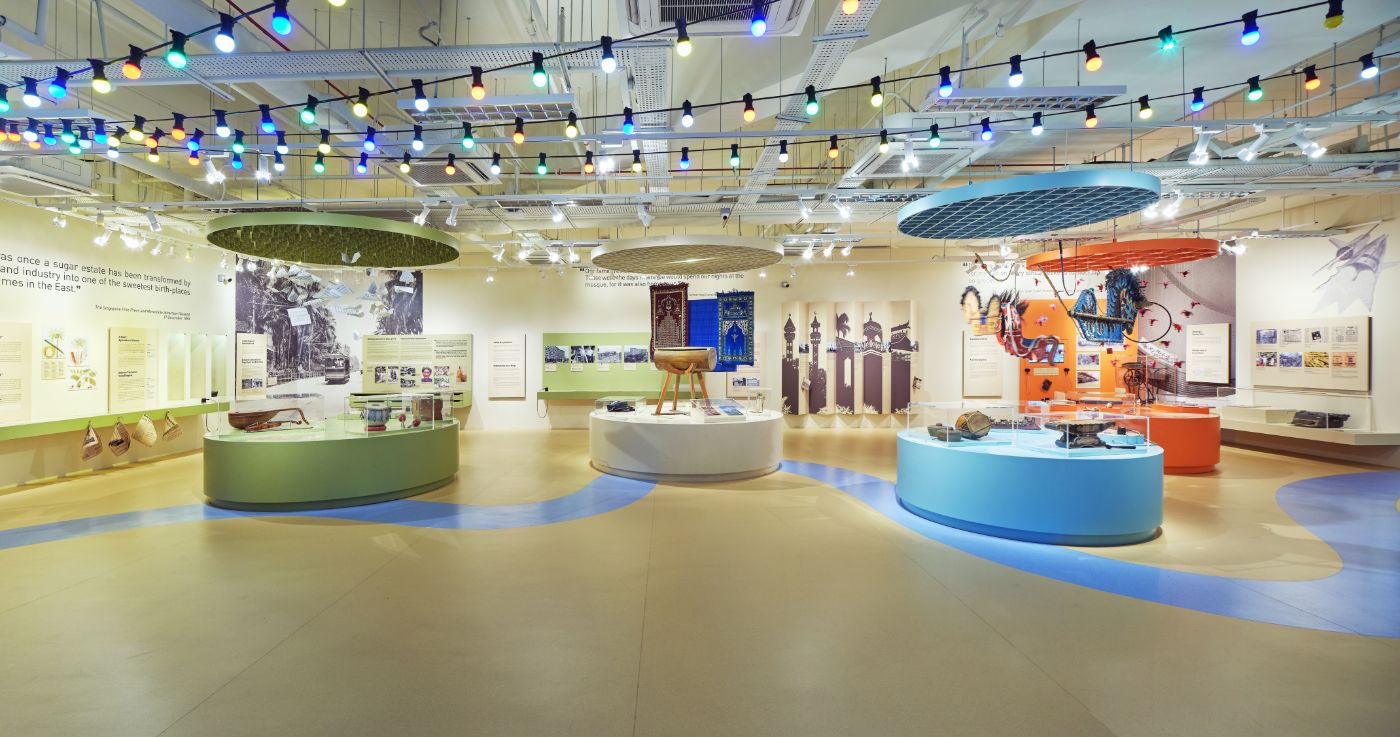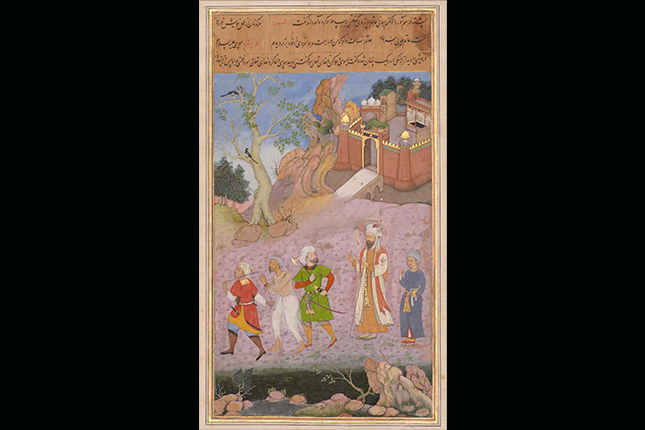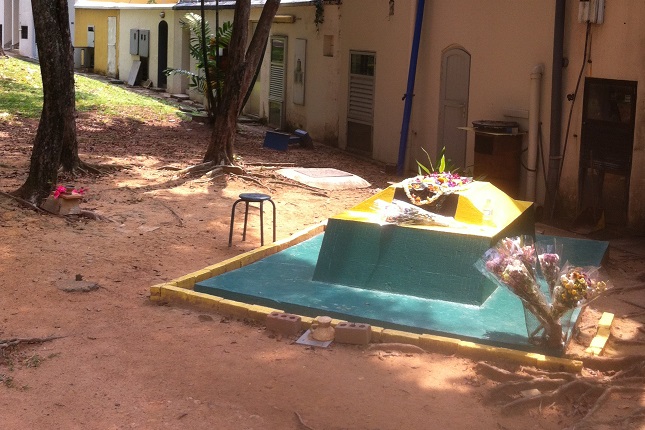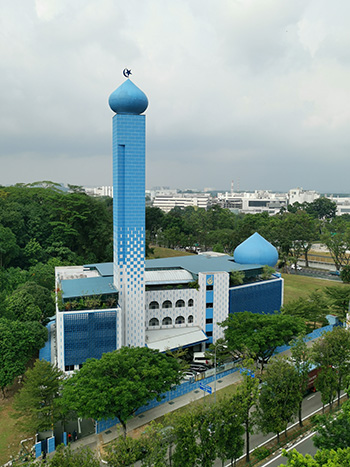Perched on the top of a small hill at Palmer Road, Keramat Habib Noh houses the tomb of Habib Noh, a Muslim saint who was respected during his life and revered after his death.
Sayyid Noh bin Sayyid Mohamad bin Sayyid Ahmad Al-Habshi—more widely known as Habib Noh—is one of Singapore’s pioneers, having arrived on its shores in 1819.
For the next 47 years, Habib Noh stayed along Bussorah Street, at Kampung Khaji, the centre for religious activities in Singapore at the time. He was highly respected as a pious, kind and generous Muslim saint.
One of Habib Noh’s good friends, Haji Mohammad Salleh, wanted to build a surau (a small prayer hall) for him. Unfortunately, Habib Noh passed away on 27 July 1866 before it was completed.
He was buried at the foot of a hillock near Mount Palmer, in the area known today as Tanjong Pagar. A keramat (mausoleum) was built over his tomb. The adjacent surau was replaced with a larger mosque in 1903 and named Masjid Haji Muhammad Salleh.
The mosque has a unique architectural style, reflective of the time it was built in. Six mock-Corinthian columns frame the main prayer hall, indicating influences from European classical architecture.
The keramat’s exterior similarly features a distinctive harmony of Middle Eastern and Western architecture. Its Tuscan columns, dentils and louvres suggest a European classical architectural influence, while its prominent onion-shaped dome and pinnacles on the roof are visibly Middle Eastern.
A Popular Place of Worship
Both Muslims and non-Muslims who knew Habib Noh would stop by the keramat for supplication or to pay their respects — a practice that continues to live on long after his death.
During the colonial period, pilgrims from as far as China and the Dutch East Indies would visit the keramat and mosque. The mosque continues to attract local and foreign visitors who would pay their respects at the keramat.
Masjid Haji Muhammad Salleh has undergone multiple expansions in order to support the growing number of visitors. Upon its completion in 1903, the mosque had a capacity of 200 congregants. In the early 1950s and 1960s, the mosque was expanded to accommodate up to 250 people. It was upgraded yet again in 1987, this time with a prayer space that could hold double the number of congregants.
Masjid Haji Muhammad Salleh reopened in 2017, following a two-year closure for renovation works. Besides able to accommodate 900 congregants at any one time, ramps and lift were also installed as part of enhancements to improve accessibility for congregants. Great care was taken to ensure that the buildings’ key architectural features remain untouched during this process.
Through the decades and transformations, the site has remained a highly revered place for generations and will remain so for years to come.
Buildings and sites featured on Roots.gov.sg are part of our efforts to raise awareness of our heritage; a listing on Roots.gov.sg does not imply any form of preservation or conservation status, unless it is mentioned in the article. The information in this article is valid as of March 2020 and is not intended to be an exhaustive history of the site/building.




